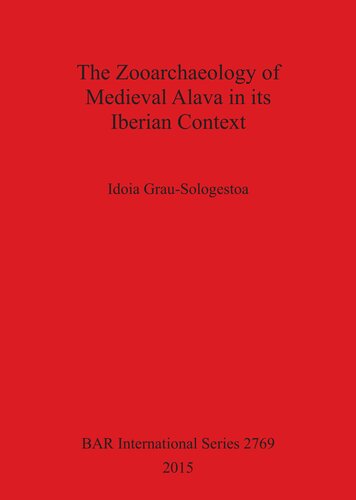

Most ebook files are in PDF format, so you can easily read them using various software such as Foxit Reader or directly on the Google Chrome browser.
Some ebook files are released by publishers in other formats such as .awz, .mobi, .epub, .fb2, etc. You may need to install specific software to read these formats on mobile/PC, such as Calibre.
Please read the tutorial at this link: https://ebookbell.com/faq
We offer FREE conversion to the popular formats you request; however, this may take some time. Therefore, right after payment, please email us, and we will try to provide the service as quickly as possible.
For some exceptional file formats or broken links (if any), please refrain from opening any disputes. Instead, email us first, and we will try to assist within a maximum of 6 hours.
EbookBell Team

4.3
8 reviewsThis book, based on the author's doctoral thesis, is focused on understanding social and economic aspects of the medieval rural world on the basis of the zooarchaeological analysis of seven different assemblages of animal remains located in the north and centre of the Iberian Peninsula. Multiple lines of analysis are utilized and combined in order to understand animal husbandry practices, subsistence strategies, the use of animal bones and antler as raw material, and site formation processes. The main contributions of this work are understanding the economic system of medieval peasant communities and changes over time, as well as understanding the ways of social differentiation through diet in medieval Iberia. Also, worked bone and antler and butchery practices are analysed. Other aspects related to the social dimension of the use of animals are discussed, such as the presence of companion animals, the introduction of species, and the veterinary knowledge of the peasant communities. The use of animals in possible ritual or symbolic contexts is also analysed. This book is a substantial contribution towards understanding animal use in the medieval Iberian Peninsula.